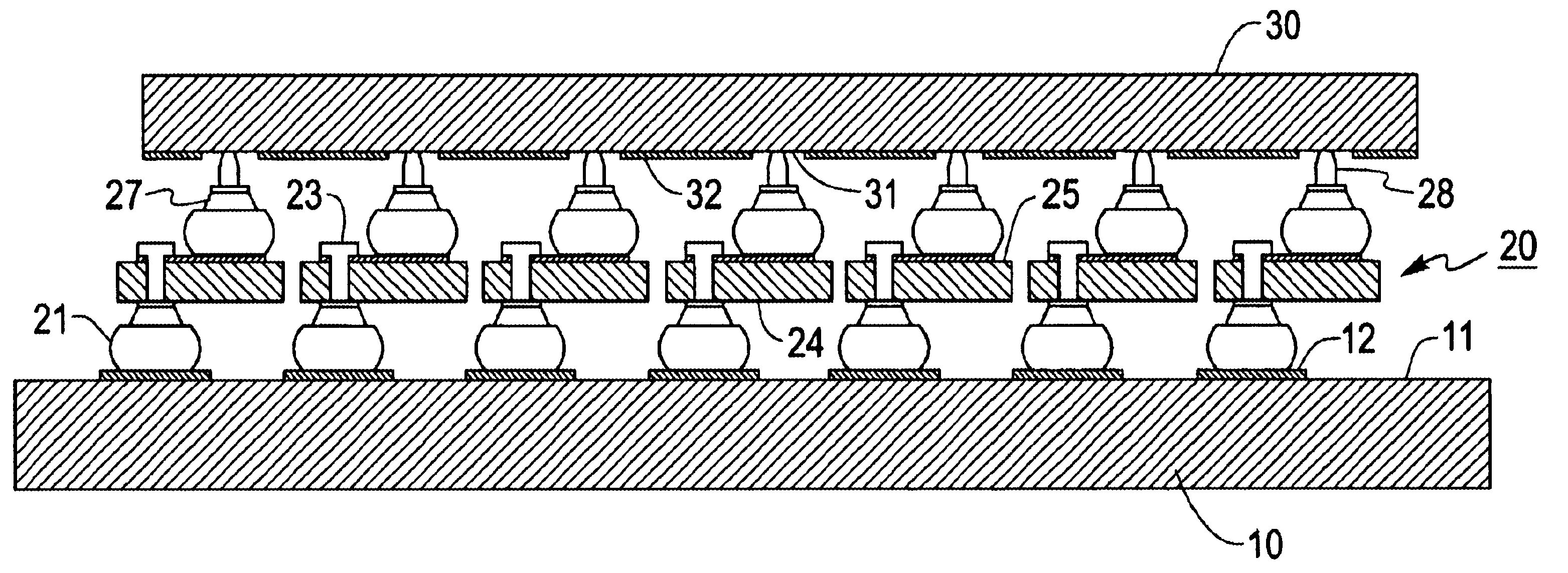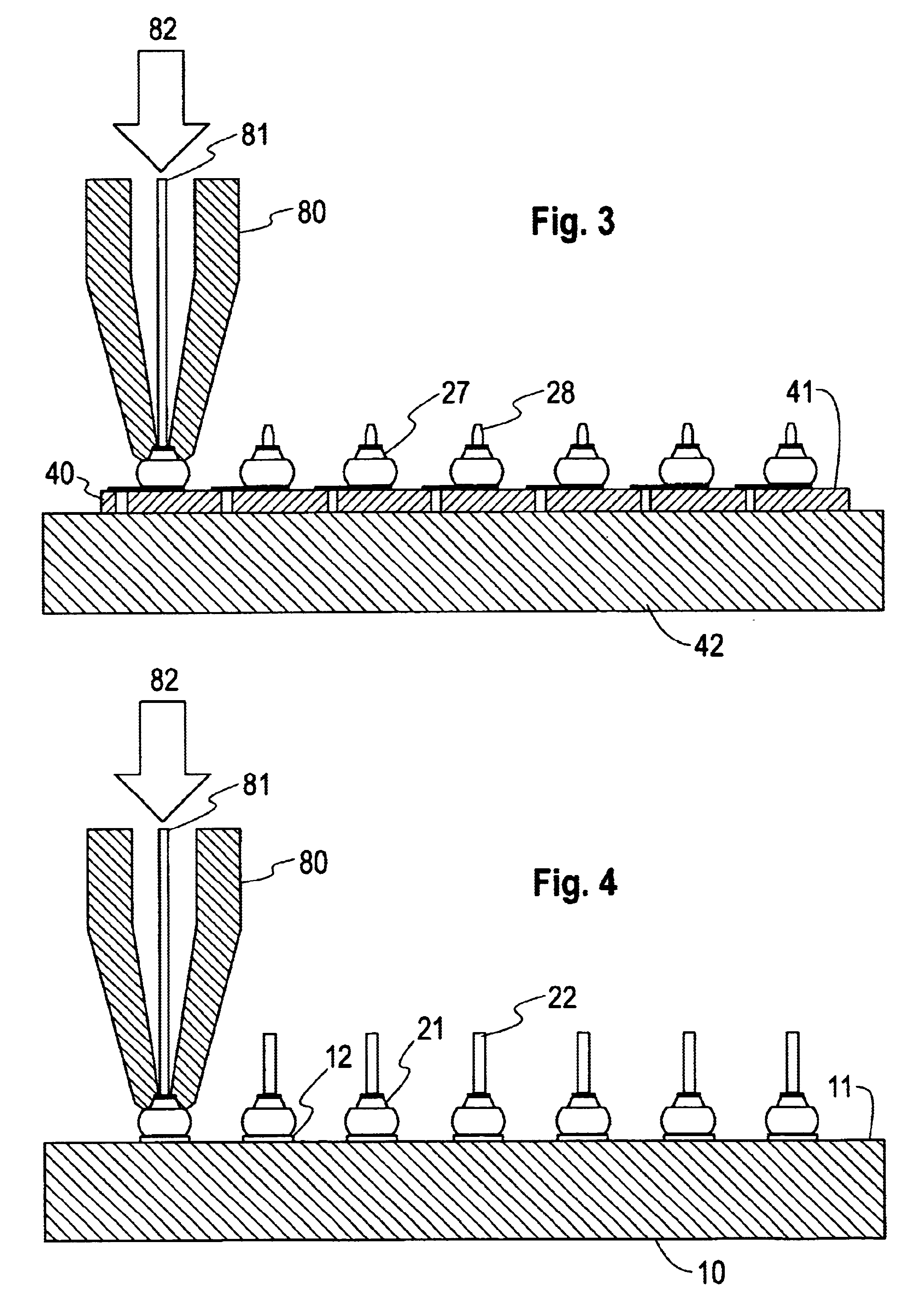Method of forming a structure for electronic devices contact locations
a technology of electronic devices and contact locations, which is applied in the direction of printed element electric connection formation, manufacturing tools, instruments, etc., can solve the problems of limiting the substrate made from a silicon wafer or other semiconductor material, rigid and not providing a wiping interface with the mating contacts, and the substrate used for fabrication of this probe fixture is limited to semiconductor wafers which are relatively expensive, so as to minimize the potential for damaging the interconnect circuit wiring and high density probe structure
- Summary
- Abstract
- Description
- Claims
- Application Information
AI Technical Summary
Benefits of technology
Problems solved by technology
Method used
Image
Examples
Embodiment Construction
FIG. 1 shows a cross section of a test substrate (10) and high density cantilever test probe (20) according to the present invention. The test substrate (10) provides a rigid base for attachment of the probe structures (20) and fan out wiring from the high density array of probe contacts to a larger grid of pins or other interconnection means to the equipment used to electrically test the integrated circuit device. The fan out substrate can be made from various materials and constructions including single and multi-layer ceramic with thick or thin wiring, silicon wafer with thin film wiring, or epoxy glass laminate construction with high density copper wiring. The cantilever test probes (20) are attached to the first surface (11) of the substrate (10). The probes are used to contact the bond pads (31) on the integrated circuit device (30). The surface of the bond pads (31) are recessed slightly below the surface of the passivation layer (32) on the integrated circuit device (30).
The...
PUM
| Property | Measurement | Unit |
|---|---|---|
| structure | aaaaa | aaaaa |
| flexible | aaaaa | aaaaa |
| compressible | aaaaa | aaaaa |
Abstract
Description
Claims
Application Information
 Login to View More
Login to View More - R&D
- Intellectual Property
- Life Sciences
- Materials
- Tech Scout
- Unparalleled Data Quality
- Higher Quality Content
- 60% Fewer Hallucinations
Browse by: Latest US Patents, China's latest patents, Technical Efficacy Thesaurus, Application Domain, Technology Topic, Popular Technical Reports.
© 2025 PatSnap. All rights reserved.Legal|Privacy policy|Modern Slavery Act Transparency Statement|Sitemap|About US| Contact US: help@patsnap.com



